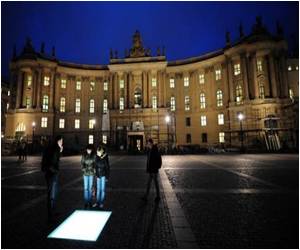A German recluse at the centre of a high-profile case that involves artworks of suspected Nazi loot has gone on the offensive and launches a legal bid.

The spectacular "Gurlitt find" of around 1,400 long-lost works in a Munich flat has placed pressure on Germany to speed up the return of art the Hitler regime stole from Jewish collectors or bought for a pittance under duress.
Now lawyers for Gurlitt, the 81-year-old son of a Nazi-era art dealer, have filed a complaint against a 2011 order by a southern German court to search his apartment and seize the hoard of priceless paintings and drawings, his spokesman said Wednesday.
Gurlitt's team also launched the website www.gurlitt.info this week to present the case of the shy collector, who has been portrayed in the media as a recluse out of touch with the modern world.
"So much has happened in the past weeks and months and is still happening," Gurlitt said in a signed statement on the website. "I only wanted to live in peace and quiet with my pictures."
He took the art world by surprise again last week when his spokesman revealed the collection was bigger than first thought, with another 60-odd pieces, including by Monet and Renoir, found at his Salzburg property.
Advertisement
Gurlitt's father Hildebrand acquired the paintings in the 1930s and 1940s, when he worked as an art dealer tasked by the Nazis with selling stolen works and art the Hitler regime deemed "degenerate".
Advertisement
Gurlitt's 45-page legal petition aims for the seizure order on the Munich trove to be lifted and the works returned, his spokesman Stephan Holzinger said.
Gurlitt feels a "strong moral responsibility" but played no part in any possibly questionable acquisitions, the spokesman said, stressing the octogenarian wants an amicable resolution with private claimants.
The seizure was based on suspected tax fraud, according to Gurlitt's defence team, which said the accusation "is not justified" and that taking away the whole collection was disproportionate.
One of Gurlitt's lawyers, Tido Park, said that in criminal proceedings, legal and moral aspects must be strictly separated "and a criminal procedure must not be used for settling restitution claims".
The initial revelation by a newsweekly that priceless art had surfaced in Gurlitt's rubbish-strewn flat raised questions about how the stash remained under the radar for so long, as well as about its origins.
Germany came under fire for long keeping the Gurlitt find under wraps and faces renewed pressure over its post-World War II restitution efforts.
Lawmakers are currently debating a law to ditch a 30-year statute of limitations that has helped protect some people in possession of contested artwork.
Gurlitt's legal expert on art, Hannes Hartung, said his client is currently in talks with six claimants.
That corresponds to three percent of the artworks found at Gurlitt's Munich home, Hartung was quoted as saying in a statement.
"In Germany there are many public and private collections in which the share of potential Nazi loot is much higher than in the Gurlitt collection -- for these collections and the museum directors responsible, there is apparently however no sanctions," he said.
A task force appointed to research the origins of the Gurlitt works says it so far cannot rule out that 458 were stolen or extorted from Jewish owners under Hitler.
It says 380 other pieces are suspected of having been confiscated as part of a campaign against what the Nazis considered "degenerate" art, mainly from public collections and museums.
Source-AFP









